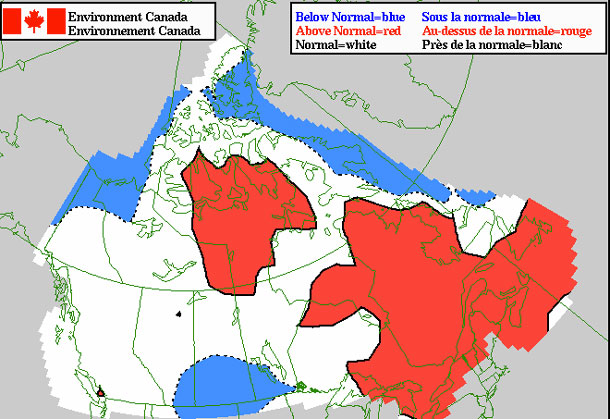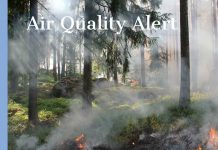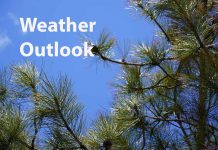
THUNDER BAY – Cool and wet weather over the weekend has dropped the fire hazard in Northwestern Ontario to low. The weather has helped fire fighters to suppress a fire in the Ring of Fire mining area that caused a mining camp to be evacuated near Webequie First Nation.
Weather forecasting over the summer from Environment Canada is calling for a ‘Normal’ summer in the Thunder Bay District. However for the far north, and for the eastern half of Lake Superior, the weather is forecast to be above the seasonal average.
Above seasonal average temperatures in the Far North could impact northern communities, and cause more extreme fires, and the need for communities to be evacuated to Thunder Bay.
Weather conditions so far this spring and into June have been, however in the minds of most to be far less than normal.
Wet Weather Puts Down Fire Hazard
The Ministry of Natural Resources (MNR) report there were no new fires in the Northwest Region on June 1 or 2. “Currently there is one active fire in the region. Suppression efforts continue on Nipigon District Fire Number 11 which is classed as under control at 210 hectares in size,” according to the MNR.
Since April 1 there have been 90 fires in the region burning an area of 285.2 hectares.
Forest Fire Hazard Low
The forest fire hazard is low across most portions of the region except the northern sectors which have a moderate hazard that will continue to rise over the coming days with warm, dry weather in the forecast.
For fire prevention information call the Northwest Region fire information line at 1-888-258-8842
Preparing for Forest Fire Dangers
Ready.gov in the United States offers these tips for families and businesses in potential fire zones.

The following are things you can do to protect yourself, your family and your property in the event of a fire.
- To begin preparing, you should build an emergency kit and make a family communications plan.
- Design and landscape your home with wildfire safety in mind. Select materials and plants that can help contain fire rather than fuel it.
- Use fire-resistant or noncombustible materials on the roof and exterior structure of the dwelling, or treat wood or combustible material used in roofs, siding, decking or trim with fire-retardant chemicals evaluated by a nationally recognized laboratory, such as Underwriters Laboratories (UL).
- Plant fire-resistant shrubs and trees. For example, hardwood trees are less flammable than pine, evergreen, eucalyptus or fir trees.
- Regularly clean roof and gutters.
- Inspect chimneys at least twice a year. Clean them at least once a year. Keep the dampers in good working order. Equip chimneys and stovepipes with a spark arrester that meets the requirements of National Fire Protection Association Standard 211. (Contact your local fire department for exact specifications.)
- Use 1/8-inch mesh screen beneath porches, decks, floor areas, and the home itself. Also, screen openings to floors, roof and attic.
- Install a dual-sensor smoke alarm on each level of your home, especially near bedrooms; test monthly and change the batteries at least once each year.
- Teach each family member how to use a fire extinguisher (ABC type) and show them where it’s kept.
- Keep handy household items that can be used as fire tools: a rake, axe, handsaw or chain saw, bucket and shovel.
- Keep a ladder that will reach the roof.
- Consider installing protective shutters or heavy fire-resistant drapes.
- Clear items that will burn from around the house, including wood piles, lawn furniture, barbecue grills, tarp coverings, etc. Move them outside of your defensible space.
PLAN YOUR WATER NEEDS
- Identify and maintain an adequate outside water source such as a small pond, cistern, well, swimming pool, or hydrant.
- Have a garden hose that is long enough to reach any area of the home and other structures on the property.
- Install freeze-proof exterior water outlets on at least two sides of the home and near other structures on the property. Install additional outlets at least 50 feet from the home.
- Consider obtaining a portable gasoline powered pump in case electrical power is cut off.













